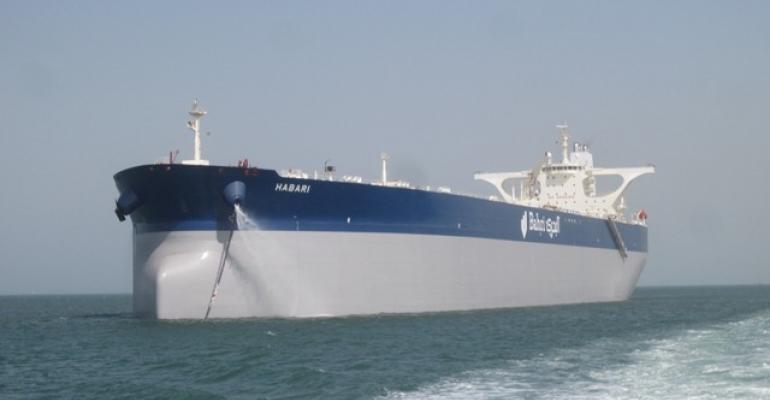At first sight, these new orders are puzzling. Crude tanker rates so far this year have suffered a disastrous spell and, although slightly firmer in recent days, are still at heavy loss-making levels. OPEC output limits have been extended, US shale production is up again, cutting tonne-mile demand, and a tense geopolitical backdrop adds to owners’ uncertainties.
Yet despite these negatives, crude tanker contracting has picked up pace so far this year. New York-based Poten & Partners, London’s E.A. Gibson and Bimco’s chief analyst Peter Sand are amongst those warning that a flurry of contracting now will only extend the misery of loss-making rates for longer.
To be fair, the 730-odd VLCC fleet has shed a significant number of vessels this year, with the 8.2m dwt of tankers scrapped in the first quarter notching up the highest volume in any quarter since 1982. VLCC recycling sales have been a key feature of the market, with a mid-May tally thought to be around 24 units sold for recycling.
But there are now 108 VLCCs on the orderbook, equivalent to about 15% of the current fleet in capacity terms, and more than 40 of them are due for delivery hits year. VLCC orders in hand at shipyards are now up by 20% on the same time last year.
Amongst the other larger sizes, there are also 49 Suezmax tankers (8.5% of the existing fleet) and 125 Aframax units (13.1%) on order, according to figures from Clarkson.
Brokers report that a significant volume of contracting recently has been based on replacement demand. But what they are increasingly concerned about is the arrival of speculators lured by cheap shipyard prices and the chance of a quick turn. “This is not what we want just now,” Poten said in a recent note.
Apart from attractive prices available from hungry shipbuilders, what else is attracting this speculative interest when earnings are so poor and the outlook so uncertain. Could it possibly be the likely impact of new regulations on the economics of operating older vessels?
Most pressing is, of course, the International Maritime Organization’s (IMO) 0.5% sulphur cap which will hit the industry in little more than 18 months’ time. The three main compliance strategies are well-documented – switch to new low-sulphur blends or distillates, continue burning heavy fuel oil and buy a scrubber (if it’s practical to do so), or switch fuels to LNG or methanol, for example, again if it’s practical.
Earlier this week, the International Chamber of Shipping (ICS) warned of likely “chaos and confusion” unless uncertainties surrounding the entry into force of the sulphur cap could be clarified. Fuel availability, it said, could become a major issue.
“It is still far from certain that sufficient quantities of compliant fuels will be available in every port worldwide by 1 January 2020,” said ICS Chairman, Esben Poulsson. “And in the absence of global standards for many of the new blended fuels that oil refiners have promised, there are some potentially serious safety issues due to the use of incompatible bunkers.”
Read More: ICS warns of 'chaos and confusion' ahead of 2020 sulphur cap
Apart from these safety issues, there are also concerns the cost of bunkers which many believe will spike sharply. Low sulphur heavy fuel oil will command a lumpy premium, bunker suppliers suggest, because extra refining will be needed. Traditional heavy fuel oil is also likely to increase in price – there will be less available because of more refining and blending, and bunker suppliers will have a captive market amongst those ship operators who have invested in scrubbers.
Then there’s ballast water to deal with, admittedly not in such a tight timeframe but nevertheless involving a likely investment of $2-3m for a large vessel.
Will the required investment and the extra cost of regulatory compliance prove attractive on old tankers approaching fourth surveys? After all, there is no payback on a ballast water treatment system; it is merely a license to trade.
There are over 300 crude tankers in the Aframax, Suezmax and VLCC categories which are more than 15 years old. About half of them are VLCCs. If the economics don’t stack up, many of these vessels are likely demolition candidates. Perhaps that is why the speculators have arrived.
Copyright © 2024. All rights reserved. Seatrade, a trading name of Informa Markets (UK) Limited.
Add Seatrade Maritime News to your Google News feed.  |


